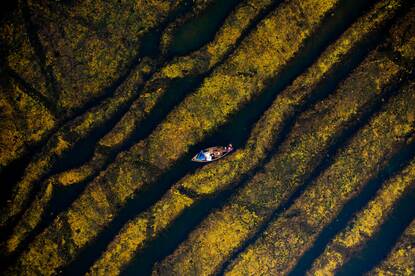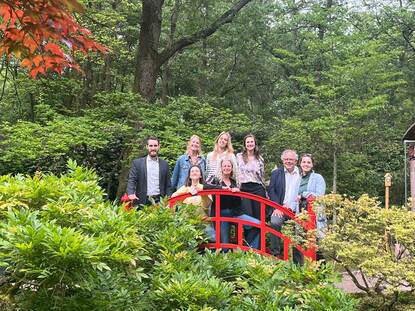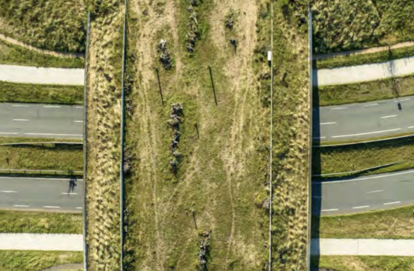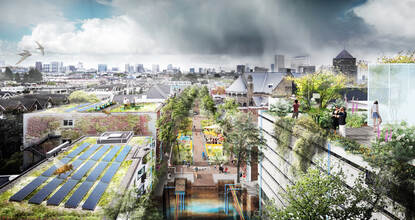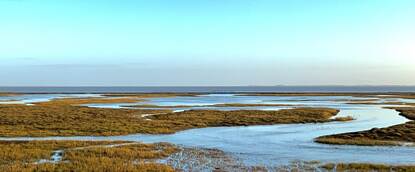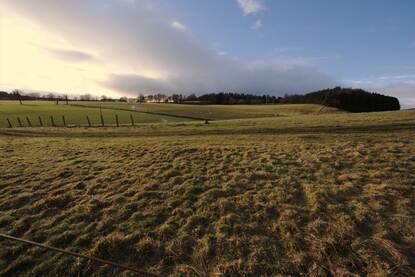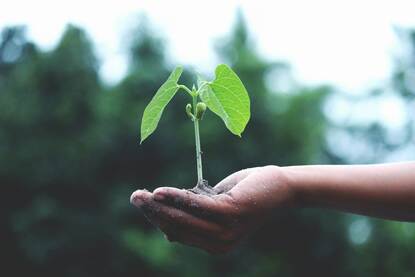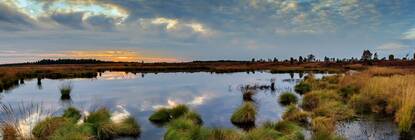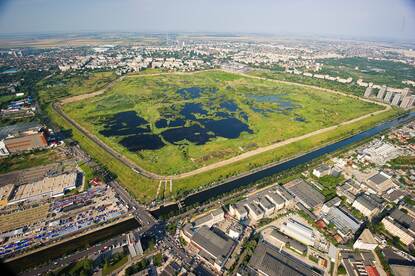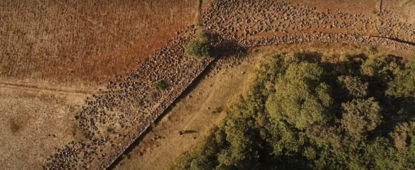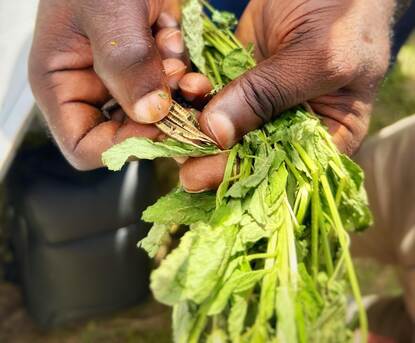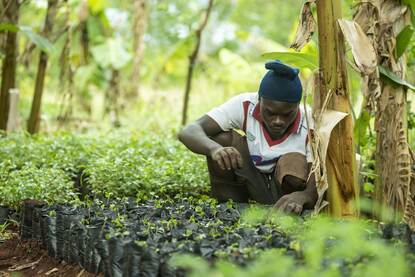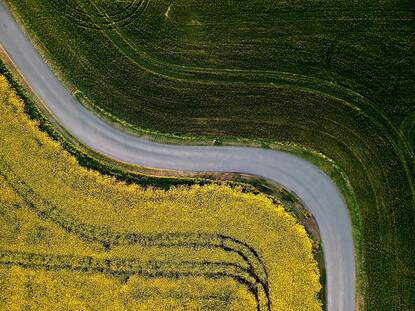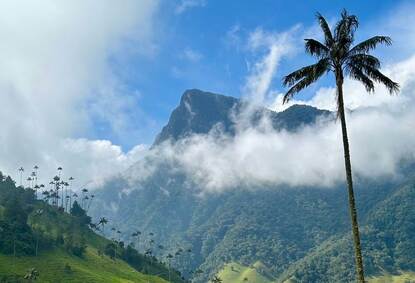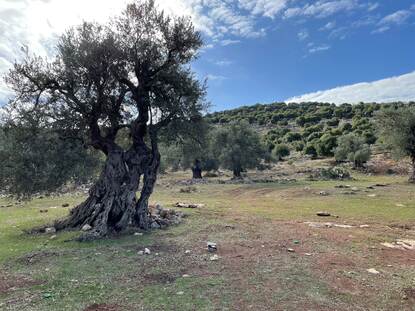Foto Agri-silvicultural systems by Dr. Anjana Atapat
As a tropical island in the Indian Ocean, Sri Lanka’s natural resources play a significant role in sectors like agriculture, fisheries, and tourism. However, the country is also grappling with habitat degradation and biodiversity loss caused by overexploitation, pollution, and unsustainable land practices. In addressing these challenges, Sri Lanka has found a valuable partner in the Netherlands. The Netherlands Agricultural Network (LAN) team at the Dutch Embassy in Colombo has been instrumental in promoting sustainable agricultural practices, particularly agroforestry on coconut plantations.
Coconut is Sri Lanka's most significant plantation crop. It covers approximately 505,000 hectares as of 2022, which is only second to paddy cultivation and is greater than the distribution of tea and rubber. Beyond its economic impact, the coconut palm is deeply woven into the cultural fabric of Sri Lanka. Known as the Tree of Life, nearly every part of the coconut tree is utilized.
However, coconut production in Sri Lanka faces significant challenges, with low productivity being a primary concern. A combination of factors – such as poor soil quality, nutrient deficiencies, and water scarcity – creates a cycle of declining yields that farmers struggle to break without appropriate interventions. To address these sustainable development challenges in coconut plantations, the application of advanced technologies is essential, with coconut-based agroforestry emerging as one of the most effective solutions.
Pilot agroforestry
Together with Dutch and Sri Lankan organizations, such as Wageningen University and Research (WUR), Netherlands Enterprise Agency (RVO), Coconut Research Institute, Tea Research Institute, Peradeniya University, IUCN, Hayleys Plantations and Kurunegala Plantations, Sri Lanka started an agroforestry pilot project in 2020. Its objective is to introduce agroforestry as an alternative production method and additional business model for degraded tea and coconut plantations to stimulate diversification of production, quality and sustainability. At the end of the project, a guideline on the commercial integration of agroforestry on plantations will be developed to promote agroforestry as a successful alternative business model for plantation sectors elsewhere.
The project includes important investments by private planters. Its focus is on sustainability and to show that including nature in businesses is not a compromise but rather an extra profit generator. The planters’ involvement will make it easier to popularize this project concept as an alternative cultivation system to generate extra profit. The planters have the capacity to expand this concept into other tea and coconut estates including small and medium-sized enterprises.
Following ecological principles, this approach should be seen as a holistic system in which multiple technologies are strategically integrated to enhance productivity effectively. It provides a roadmap for improving people's well-being and land use while sustaining production. Thus, through proper intergrowing of crops, trees and livestock, farmers can establish economic and ecological structures that address hardships for overall farming operations. The major types of coconut-based agroforestry systems are shown in the images below.

Enhanced biodiversity and ecosystem services
Agroforestry promotes biodiversity by introducing a variety of plant species into coconut plantations. This biodiversity attracts beneficial insects, birds, and other wildlife, which help control pests and pollinators. The presence of multiple species reduces the plantation’s vulnerability to pests and diseases, contributing to a healthier ecosystem.
The inclusion of nitrogen-fixing trees like Gliricidia and Sesbania in coconut agroforestry systems improves soil fertility by fixing atmospheric nitrogen, reducing the need for chemical fertilizers.
Economic diversification and increased income
One of the most significant advantages of agroforestry is economic diversification. Growing high-value intercrops (such as cocoa, coffee, pepper, ginger, and turmeric) alongside coconut trees provides additional sources of income and reduces the economic risks associated with coconut price fluctuations or crop failures. Integrating livestock integration (such as raising goats, poultry, or cattle) under coconut trees, diversifies income and provides manure that enriches soil fertility. Also, the sale of fruits, vegetables, spices, and timber from agroforestry systems can significantly boost a farmer's income, contributing to improved livelihoods and food security.
‘To address sustainable development challenges in coconut plantations, the application of advanced technologies is essential, with agroforestry as one of the most effective solutions’
Improved soil health and nutrient cycling
Agroforestry enhances soil health through improved nutrient cycling. The leaf litter and organic matter from companion plants decompose, releasing essential nutrients back into the soil. This natural process reduces the need for synthetic fertilizers, lowers input costs, and promotes sustainable soil management. The roots of trees and shrubs help stabilize the soil, reducing erosion, and improving soil structure. This enhances water infiltration and retention, which is particularly beneficial during dry periods. Agroforestry systems also improve soil microbial activity, which plays a critical role in nutrient availability and overall soil health.
Climate resilience and carbon sequestration
Coconut plantations grown alongside agroforestry systems help improve the climate by providing shelter to plants from harsh environmental conditions. Trees and shrubs contribute to this by slowing the wind, reducing heat stress and retaining moisture. All this is desirable for coconut palms and intercrops. Another benefit of agroforestry is the regulation of climate change since trees are one of the biggest absorbers of carbon in the world.
Enhanced water management
Water management is critical in coconut plantations, especially in drought-prone regions. Agroforestry systems improve water use efficiency through the presence of multiple plant layers that capture and utilize rainfall more effectively. Additionally, the roots of trees and other plants help filter pollutants, improving the quality of water that percolates into the groundwater system.

The Netherlands: promoting sustainable foods systems and healthy food
The Netherlands Agricultural Network (LAN) team in Colombo contributes to the promotion of sustainable food systems and producing healthy foods using Dutch knowledge and technology. For example, the team organized a series of capacity building and knowledge exchange programs on Integrated Pest Management (IPM) and biodiversity conservation, in collaboration with the Department of Agriculture in Sri Lanka. Around 300 trainers were trained using Dutch knowledge and expertise. HollandDoor organized the programs with experts from various Dutch organizations, including WUR, Koppert, Rijk Zwaan, Control Union and more. One of the main results of these programs was to improve biodiversity-friendly production practices by using less toxic plant protection products. Ultimately, these programs are expected to promote environmentally, socially, and economically sustainable production systems with maximum resilience.
Additionally, the LAN team has organized several events in horticulture, forestry, dairy and poultry to facilitate the sharing of knowledge and expertise in terms of protecting nature and promoting biodiversity: organizing study tours, actively promoting Dutch knowledge and technology through missions, organizing lobbying, networking and advocacy activities have been prominent among them.
Strategic priorities for the future
Given the rich biodiversity and tropical forest cover, there is great potential for Dutch organizations to make use of the research capacities and potentials in Sri Lanka. Promoting such collaborations between the two countries is one of the strategic priorities of the LAN team for years to come. These collaborations are expected to contribute to Dutch innovation, creation and demonstration of new knowledge, expertise and technology particularly in biodiversity promotion and regenerative agriculture.

More information
This article includes the findings of the research titled 'Leveraging Agroforestry Principles for Nature-Based Climate-Smart Solutions for Coconut Cultivation' by Anjana J. Atapattu and Shashi S. Udumann of Coconut Research Institute in Sri Lanka.
Would you like to know more about the benefits of agroforestry on coconut plantations for biodiversity conservation in Sri Lanka? You can visit the country page of Sri Lanka at the website Agroberichtenbuitenland.nl of the Dutch Ministry of Agriculture, Fisheries, Food Security and Nature. You can also send an email to the LAN team in Colombo: col-lvvn@minbuza.nl.

